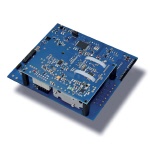Compliance to Medical Standards
All our modules comply with the current medical standards, listed in the features list of the individual parts, as far as this is possible for a module alone.
Still, the user has to make sure and also proof to the authorities that his final product is in compliance with the mentioned standards, which always requires testing of the final medical product.
Let us further explain this by a few examples:
1) The pulse oximeter standard requires the display of the oxygen saturation value to be updated at least once every 30 seconds. While our modules generate a new value every second, also the user interface of the customer has to be designed in a way that ensures fast enough screen updates.
2) The ECG standard for monitors requires the final medical device to be of patient isolation class CF. While our modules easily fulfill these requirements, the complete product designed with the modules (including the customer's power supply) need to have leakage currents low enough to allow for class CF marking.
3) All standards include a long list of required information and warnings for the medical device's user manual. It is within the responsibility of the manufacturer of the final medical product to include these warnings into his user manual.
There are countless more examples, why the compliance of the modules with the standards is not enough, and why also the company bringing the end product into the markets still needs a large amount of expertise within the field of medical device standardization and requirements.
As a conclusion, it can be said that designing the OEM modules with the requirements of the applicable standards in mind is a necessary, but not sufficient requirement for the final product to be in compliance with the applicable standards.



